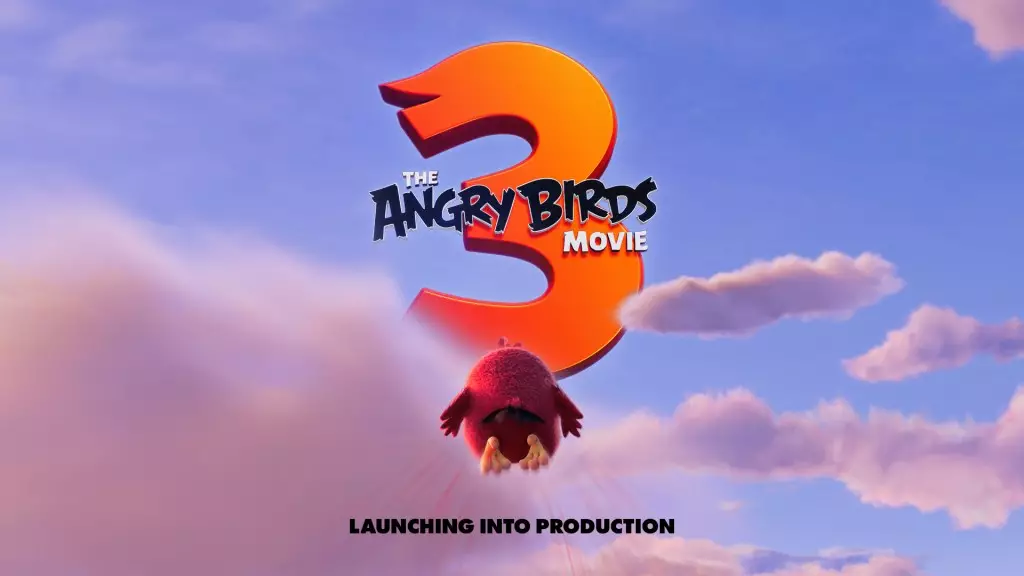The announcement of *The Angry Birds Movie 3* marks not merely a continuation of a beloved animated franchise but a significant milestone in the persistent evolution of digital properties into mainstream cinema. Scheduled for a global theatrical release by Paramount Pictures on January 29, 2027, this film encapsulates not just the playful spirit of its predecessors but also the potential for animated features today to deliver a broader emotional narrative. In an era where family films are inundated with either excessive nostalgia or uninspired reboots, *The Angry Birds Movie 3* stands as a beacon of creativity and innovation, proving that even a gamified concept can grow into a vital narrative.
Despite two previous films that collectively garnered over $500 million at the box office under Sony’s distribution, the transition to Paramount suggests a strategic pivot and a bold reimagining of how animated content can engage audiences. This gamble highlights a refreshing trend – studios adapting to changing viewer preferences and familial dynamics, shaping narratives that resonate emotionally while appealing to a new generation of viewers.
The Power of Cast Dynamics
Bringing back the original voice cast—Jason Sudeikis, Josh Gad, Rachel Bloom, and Danny McBride—adds a layer of familiar warmth to the upcoming film. Recasting these characters means maintaining the heart of the franchise, while the addition of a vibrant ensemble cast, including rising stars like Keke Palmer and Emma Myers, signals an ongoing commitment to diversity and relatability. This mélange of talent could offer a brilliantly intricate blend of humor and heart that is often missing in contemporary animation.
As studios strive to create universal appeal, *The Angry Birds Movie 3* appears to be taking its responsibility seriously, with a cast filled with comedic heavyweights. This reflects a strategic understanding: the modern family movie must offer something for everyone—children, parents, and even the multi-generational crowd drawn to the nostalgia of gaming culture.
Creative Collaboration: A Winning Formula
The creative team behind *The Angry Birds Movie 3* is a tapestry of experience and fresh talent. Director John Rice, who previously helmed popular titles, along with screenplay writer Thurop Van Orman, ensures that this film stays true to its roots while evolving narratively. Their partnership with seasoned producers like John Cohen signals a commitment to quality that can elevate even the most playful of plots.
Moreover, returning composer Heitor Pereira adds an essential auditory dimension that has enhanced both prior films. His unique soundscapes have, in a way, become synonymous with the series, inviting audiences to not just watch but to experience the vibrant world of the Angry Birds deeply. In an animated landscape often punctuated by eclectic soundtracks that clash rather than harmonize, Pereira’s return is a careful and wise decision that augments the film’s emotional undercurrents.
Corporate Synergy and Global Reach
The collaboration with marketing and distribution giant Paramount Pictures promises to leverage their vast reach and innovative promotional strategies. As Marc Weinstock, President of Worldwide Marketing & Distribution, points out, *The Angry Birds* transcends simple entertainment, celebrating the joy of collective viewing experiences. In an age where viewer engagement often falters, relying on familiar brands may be the best way to rekindle the communal joy of cinema.
However, this also raises questions. With corporations increasingly entwined in creative endeavors, will such partnerships dilute artistic integrity in service of profit? The entertainment industry is familiar with the balance between artistic ambition and commercial viability; yet the success of *Angry Birds 3* might represent a new paradigm—a successful marriage of creativity and commerce that can inspire future projects.
A Legacy of Versatility
Rovio Entertainment’s stewardship of *The Angry Birds* franchise exemplifies a capability to innovate beyond its original gaming origins. The brand has traversed mediums—invading our lives through mobile games, animations, and now a fully realized cinematic venture. Alex Pelletier-Normand’s comment on the franchise’s adaptability underscores a deeper narrative: pop culture phenomena must constantly evolve or risk fading into obscurity.
As we look forward to the release of *The Angry Birds Movie 3*, one must wonder: how will this film encapsulate the zeitgeist of its time? Will it merely be another animated film, or will it emerge as a significant cultural artifact, reflecting our own complexities and challenges? The landscape is ripe for exploration, and *The Angry Birds Movie 3* offers the intriguing promise of being more than entertainment; it could be a commentary on resilience, connection, and humorous hope in uncertain times.


Leave a Reply